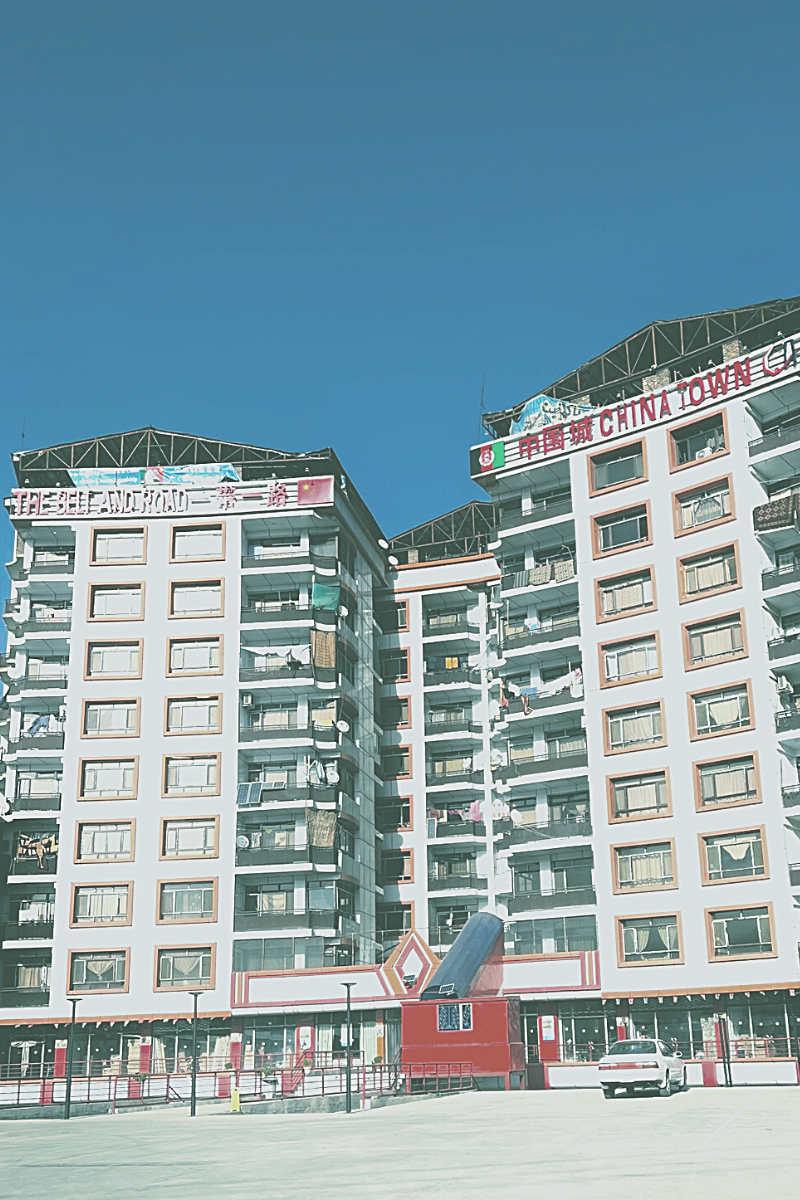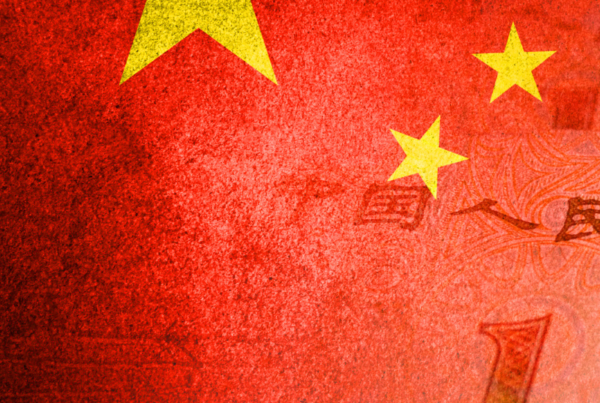KABUL, Afghanistan – Although no country has officially recognized the Taliban government, a handful of countries have diplomatic missions in Afghanistan and have been cultivating relations on the back channel for years.
Case in point: China. And as speculation over the past twelve months would have it, Beijing is stealthily positioning itself to pick up where the United States left off.
The world’s most populous country has maintained a precarious yet affable rapport with the Emirate. However, since last year’s government takeover, reports and rumors have percolated that the Asian superpower – often criticized in the West for its “belt and road,” aka loan-to-own schemes in poor places across the planet – will take advantage of the power void and endeavor to dominate Afghanistan’s untapped mineral wealth, prompting security and governance hurdles for the West.
In theory, tight ties between Beijing and the Taliban seem logical – with the former able to provide fast funds to the latter to help make up for the financial shortfall triggered by the international sanctions and China able to climb higher in its dominance over the world energy sector.
There is, however, a sense that things aren’t quite as cozy as rumors and reports suggest. For starters, a big black hole remains the development – or lack thereof – of the storied Mes Aynak copper mine tucked deep inside the arid plains of Logar province.

Although it means “little copper mine,” Mes Aynak hosts the planet’s largest, most unexploited copper deposits, to a value of 11.08 million tons and an estimated worth of $50 billion. Even while the U.S. taxpayer was funding the frail security apparatus amid the surge of the elongated war, China’s Jiangxi Copper Co Ltd and the Metallurgical Corp of China (MCC) beat out a host of international proposals to win a three-decade, $3.4 billion lease of the coveted mine in 2008.
“We will honor the contract, but we have made it clear that it has to move forward now,” one well-placed Talib official in the Foreign Ministry tells me on the condition of anonymity. “We have been very clear in our demands; it must begin. Otherwise, we will rip it (the agreement) up.”
On a separate occasion, Mufti Esmatullah Burhan – the Taliban spokesperson for the Ministry of Petroleum and Mines – asserts that one of the main reasons (the contract) did not continue after signing was because “the Americans were here and had a contradicting interest with China.”
“The American soldiers were dying here,” he continues. “And how can America tolerate a competing country benefiting from mining here?”
But even with the U.S. far removed for over a year now, Mufti concedes that the “MCC company has gone silent.” Taliban leaders are trying to “reach an understanding” with the Beijing-based construction company, but progress has yet to be made.
Part of the mining challenge is that Aynak is also home to Central Asia’s most critical nuggets of archeological value – dating back to Zoroastrian times (one of the planet’s oldest organized religions BCE) and later the epoch of Buddhism in the fifth century. Unlike the Taliban of the 1990s, which angered the world when it blew up precious Buddhas in Bamiyan province, Taliban 2.0 is keenly aware of the tourism and monetary value in its archeological paragons. Nevertheless, Mufti stresses that the mining ministry is “putting a lot of pressure on the Ministry of Culture” to finish the delicate excavation process, so they can proceed on the much bigger moneymaker, the untapped copper deposits.
Nevertheless, the monetary appraisal of China’s Aynak lease in today’s current climate is worth far more than could have been imagined when the United States first invaded in 2001. Back then, there were no iPhones and no Tesla vehicles. Cut to more than two decades on, and modern society is fueled by high-capacity batteries, and high-tech chips critical for smartphones, making Mes Aynak – and much of Afghanistan – an ever-more powerful parcel of earth.
Nevertheless, the Emirate is undoubtedly frustrated by China’s unwillingness to advance existing contracts and ink new deals.
My heightened sense that all is not exactly serene between the two parties – at least in the mining sector – is further cemented when I broach the issue with Abdul Wahid, General Manager of a coal transport facility in the Deh Sabz district of Kabul.
“There was a time when the Chinese came in to do an assessment. But they didn’t proceed (in purchasing the coal),” he notes. “They come on a regular basis. Some were here yesterday; another group came two weeks ago. So, they come a lot but have yet to make a contract.”
As it stands now, Abdul’s company sells almost all its coal to Pakistan, which then sells it directly to China, he explains.
“Secondly, in Pakistan, they can pack (the coal) while we have no packing system here,” Abdul continues. “Thirdly, they (the Chinese) deal on a regular basis with Pakistan, so that (relationship) has caused it not to proceed here.) Another problem is that our traders have permission to clear the borders of Afghanistan and Pakistan, but they do not have permission to clear the Chinese border, so they must go through Pakistan.”
However, another glaring reason for this is the fact that – while China and Afghanistan do share a rugged 47-mile, wedged in Afghanistan’s northeast at the end of the long, narrow Wakhan Corridor linking to the mountainous Chalachigu Valley on China’s side – there is no direct land route connecting the two countries.
Abdul assures me that they are trying to secure transit permissions and “build a way” to navigate the mountainous border terrain.
“But Afghanistan private companies don’t have the facilities to build roads,” he points out. “That is a government thing.”
And there are some signs of steady progress in addressing the logistics quagmire. In late September, China dispatched its first freight load to Afghanistan on a new rail route, transiting through Central Asia. Beginning in the Uighur heartland of Xinjiang province, the course then moves through Kyrgyzstan and Uzbekistan and then into Afghanistan’s Hairatan, which connects to the northern city of Mazar-e-Sharif, removing Pakistan from the equation.
The new route takes around two weeks, compared to the longstanding, nearly three-month journey that requires China to pass through Pakistan through the seaport of Karachi and then across the land into Afghanistan.
Further, the controversial Uighur issue may also hamper China’s immediate interests in Afghanistan.
Beijing has expressed dismay over the presence of Uighurs – a Muslim minority in China that has been subject to alarming human rights abuses – living freely inside Afghanistan. The Chinese government has repeatedly raised concerns that such Uighurs could be plotting terrorist attacks on the mainland and reportedly demanded their expulsion from Afghanistan for agreements to proceed.
Subsequently, some Afghans are uneasy that this could eventually become a trade-off for mining agreements. Yet from my purview to date, all indications suggest that isn’t the case – at least not yet – as the Taliban seems to value their sovereignty and refusal to be told what to do by outside powers than it does a quick payday.
Instead, the Taliban frequently responds by insisting it does not allow terror outfits to operate on its terrain.
“The Islamic Emirate signed an agreement that it will not keep the enemies of anyone here; we signed the Doha agreement that we will not allow anyone to attack anyone else,” Mufti explains, his tone turning serious. “And the third thing is that we will not accept conditions from anybody.”
I read this between the lines to mean that after two decades on the bloody backburner by foreign forces, the Taliban will under no circumstances allow external powers to call the shots.
“That is China’s problem; that is their thing,” Mufti responds when I ask directly if the Emirate would hand over ethnic Uighurs, deflecting. “Now we have a destroyed country, and we want to (focus) on building it first.”
Meanwhile, on another warm Spring afternoon, I meet with Yo Ming Ho, the founder of Kabul’s Chinatown (which works jointly with an Afghan partner). Donning a bright blue shirt and cheery smile, he tells me that he founded the Chinatown commerce center – a quiet building in the suburbs – in 2002, firstly out of curiosity and then to connect his homeland businesses with the new era of Afghanistan.
Yo observes that “security is now better” since the Taliban returned to governance, as the war essentially ended. But with Afghan banks still hamstrung by U.S.-led sanctions, and locals limited to cash withdrawals of just $400 per week, he acknowledges that the trade between the two partners sharply decreased over the past year. I am under the impression that investors are waiting to see what happens before making a bold return to the market.
Sulaiman bin Shah, the former Deputy Commerce Minister, surmises that it comes down to Beijing still harboring steep security concerns.
“There is only one demand officially from China, and that is they need security,” he notes. “And the Taliban (has told them) to recognize the government.”
That still has not happened. While Beijing has diplomatic representatives at its Embassy in Kabul, alongside Russia, Iran, Pakistan and Uzbekistan, formal acceptance from any country is still pending.
Some insiders say that the Taliban maintains legitimate worries that China will “come in and take the cream away and leave Afghanistan without any real development.”
“And importantly, the West will be upset if there are big deals by Chinese business groups, so there is that risk,” Sulaiman conjectures. “(China) is doing the delay tactic. They are trying to familiarize themselves and learn more about what is happening here. There are hundreds of Chinese here.”
But it is clear China does not have carte Blanche over the wealth, at least not yet.
Mufti stresses that while the Taliban welcomes Chinese business interests, especially in the mining realm, they are just as cordial to other countries – including Americans. And indeed, China is hardly alone in its ongoing Afghanistan exploration.
There is also another prominent worry for Washington: Afghanistan’s northern neighbor, Iran. But that relationship is plagued with its own set of fits and starts.
When it comes to the mining sector, reports recently surfaced that Tehran was officially preparing to extract 100,000 tons of coal from the Hindu Kush mountains in Afghanistan’s Ghor province. Yet when I broached this issue with Mufti, he underscored that it is not coal that Iran needs, but iron. Subsequently, a slate of problems has arisen concerning the coveted Ghoryan Iron Mine that spans both countries.
“80 percent of Ghoryan is in Afghanistan, 20 percent is in Iran. It is the largest iron mine,” he says, explaining that Iran has been working on the mine for years, but Afghanistan will not succumb to pressure to give their neighbor more than its fair land share. “We can make $180 billion from the iron mine alone in 30 years. That is about $6 billion per year.”
Mufti further boasts that they have received investment interests from many other countries in addition to China, Pakistan and Iran – Malaysia, Azerbaijan, and Russia, to name a few. For Moscow’s part, Mufti declares they are more interested in fuel, coal, copper and gold. He tells me that they have listed eight major development projects and have already issued 170 small mining projects to domestic companies.
“We have put a condition on any international company that wants to come here, they must have an Afghan partner,” he states. “Even countries brutal to us – Australians, Europeans, Americans – you are welcome to come.”
Another Emirate official surmises that they don’t want to side with the East or West but open up the field of opportunity.
“We do not want to rely on Pakistan and Iran to turn Afghanistan into their dumping ground,” he adds emphatically.
Maiwand Naweed contributed to this report.











